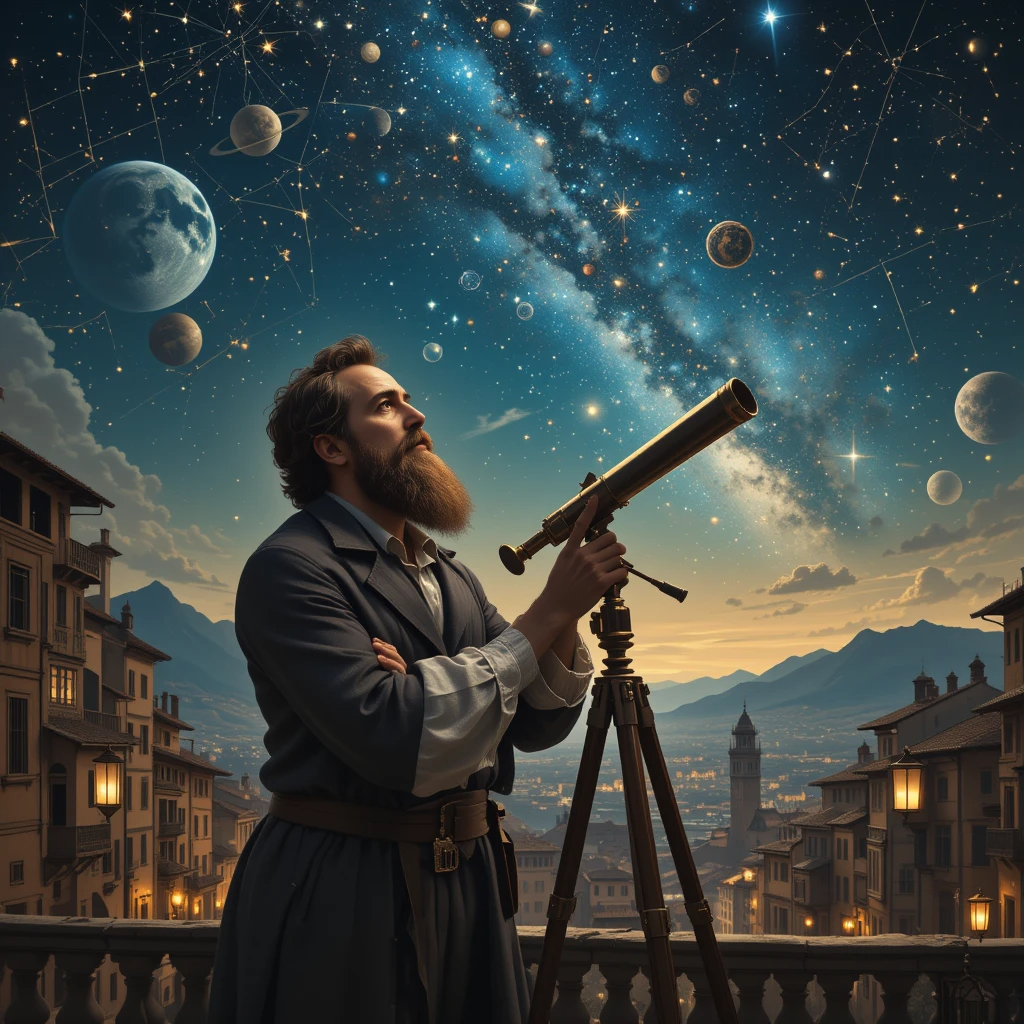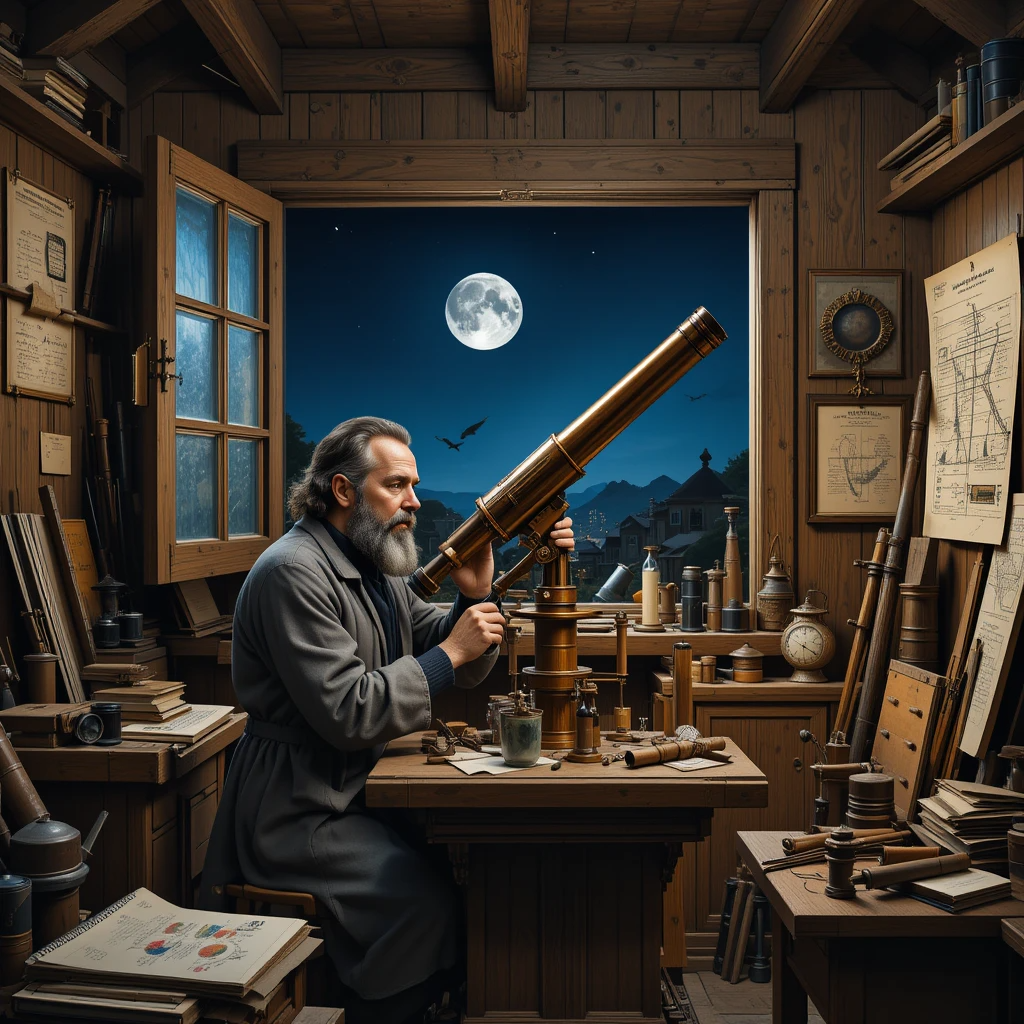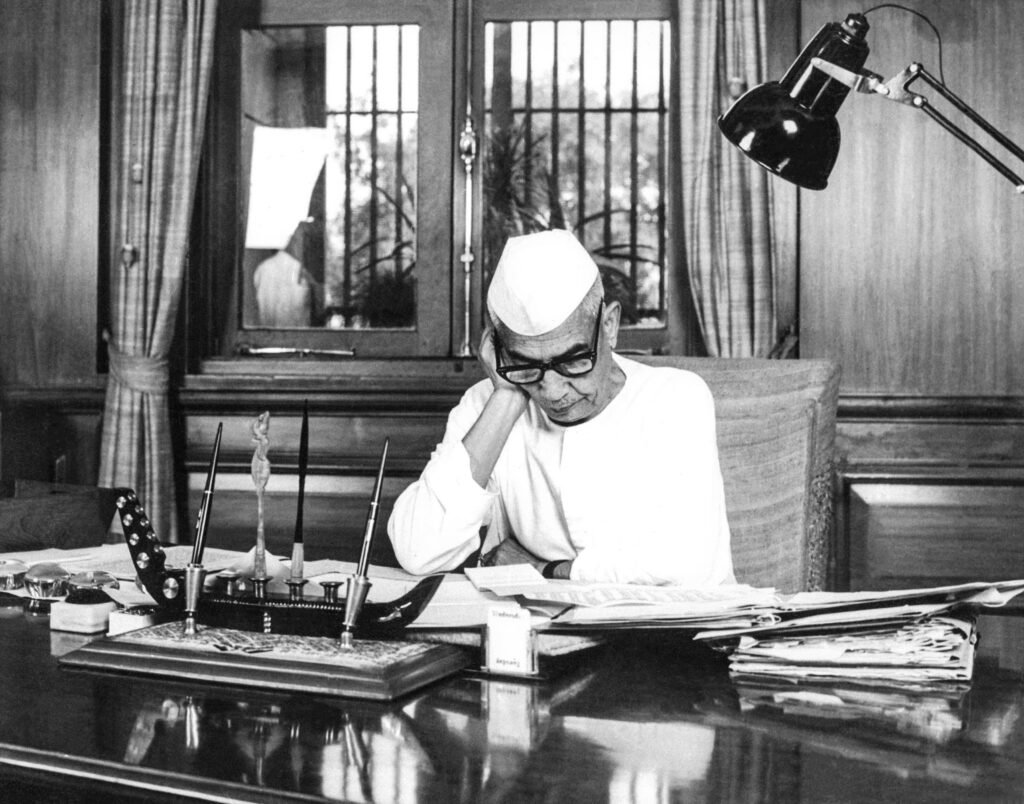Introduction: A Visionary Who Changed the Course of History

Galileo Galilei (1564-1642), often hailed as the father of modern science, stands as one of the most pivotal figures in the history of human knowledge. Born in Pisa, Italy, during the height of the Renaissance—a period marked by remarkable intellectual and cultural upheaval—Galileo’s work laid the foundation for several fields of modern science, including physics, astronomy, and scientific methodology. His challenges to established norms not only redefined humanity’s understanding of the universe but also reshaped the very nature of scientific inquiry.
Table of Contents
Galileo’s influence transcends his direct contributions to astronomy. His development of experimental methods and his advocacy for empirical research were crucial to the Scientific Revolution, which began to challenge traditional philosophical and religious doctrines. The scientific community in his time operated under the prevailing Aristotelian view, but Galileo’s observations and theoretical work provided the tools needed to tear down these longstanding beliefs, setting the stage for future scientific giants like Isaac Newton and Albert Einstein.
This blog will explore Galileo’s early life, his groundbreaking scientific discoveries, and the immense personal challenges he faced, particularly his conflict with the Catholic Church, which led to a trial and house arrest. His perseverance in the face of immense opposition not only advanced the scientific community but also reinforced the importance of intellectual freedom in shaping human progress.
Early Life and Education: The Seeds of Curiosity

Birth and Family Background
Galileo was born in the city of Pisa, Italy, on February 15, 1564, into a family that would have a significant influence on his intellectual development. His father, Vincenzo Galilei, was a musician and a scholar who played a crucial role in shaping Galileo’s early education. Vincenzo’s work in music theory was progressive, and he believed in the importance of education, particularly the study of mathematics, which would later become Galileo’s greatest passion. This intellectual environment nurtured Galileo’s early curiosity and set him on a path that would ultimately lead to scientific greatness.
Though Galileo’s father was initially keen on him following a career in medicine or the clergy—typical career paths for sons of the time—Galileo’s interests began to veer away from these prescribed paths. In 1581, at the age of 17, Galileo entered the University of Pisa to study medicine, following his father’s wishes. However, it was during his time at the university that he encountered mathematical and philosophical concepts that would ignite his passion for the natural sciences.
The University of Pisa: A Shift in Focus
At the University of Pisa, Galileo studied under professors who emphasized Aristotle’s natural philosophy, which was grounded in a belief that the Earth was the center of the universe and that the heavens were perfect and unchanging. However, Galileo quickly became disillusioned with these teachings. His intellectual curiosity led him to explore new ideas that challenged these ancient concepts.
After only a year, Galileo abandoned his medical studies in favor of mathematics and natural philosophy. In 1589, he was appointed as a professor of mathematics at the University of Pisa. This new role allowed him to expand his studies and begin conducting experiments on motion, particularly the study of how objects fall.
It was during this time that Galileo conducted his famous experiment in which he dropped different weighted balls from the Leaning Tower of Pisa. Contrary to Aristotle’s teachings, Galileo showed that objects, regardless of their weight, fell at the same rate. This was a crucial breakthrough in the field of physics and demonstrated that scientific inquiry based on observation and experimentation could yield results that defied ancient theories.
The Development of the Telescope: A Revolutionary Invention

The Invention of the Telescope
In 1608, Galileo heard about the invention of the telescope, a new optical device that magnified distant objects, originally created in the Netherlands. By 1609, Galileo had constructed his own version of the telescope, which he enhanced to achieve a 20x magnification, far greater than that of the initial model. This new instrument allowed him to see the night sky with unprecedented clarity.
The telescope would become Galileo’s most important tool, and with it, he made some of the most revolutionary discoveries in the history of science. However, his improvement of the telescope was not just a technical achievement—it was an expression of his methodical and experimental approach to understanding nature. Galileo’s pursuit of knowledge through observation and experimentation marked a radical departure from the reliance on philosophical speculation that had dominated the sciences for centuries.
The First Observations: A New Window to the Universe
Once Galileo had perfected his telescope, he directed it toward the heavens. His first observations were nothing short of revolutionary.
The Moon, which had been regarded as a perfect and smooth celestial body, was revealed to be covered with craters, mountains, and valleys. This discovery shattered the Aristotelian belief in the perfection of the heavens and suggested that the moon was not a perfect, unchanging body but rather a world in itself, subject to the same physical laws that governed Earth.
Galileo’s next major discovery came when he turned his telescope to Jupiter. He observed four small stars, which he later identified as the moons of Jupiter—Io, Europa, Ganymede, and Callisto. These moons orbited Jupiter, not the Earth. This discovery was a direct challenge to the geocentric model of the universe, which held that all celestial bodies orbited the Earth.
The Moons of Jupiter: A Direct Challenge to the Geocentric Model
Galileo’s observations of Jupiter and its moons provided strong evidence for the heliocentric model of the universe, which had been proposed by Nicolaus Copernicus. The geocentric model, which placed Earth at the center of the universe, had dominated Western thought for over a millennium. The Catholic Church, which wielded immense power during this period, also upheld this model, as it was seen to align with biblical teachings.
However, Galileo’s discovery that Jupiter’s moons orbited their planet—just as the Earth orbited the Sun—was groundbreaking. It provided clear evidence that not everything in the heavens revolved around the Earth. This challenge to the geocentric model was a direct threat to the power of the Church, which held that the Earth was the center of God’s creation.
Galileo’s support for the heliocentric theory, which placed the Sun at the center of the universe, was considered heretical by the Church. Galileo’s discoveries—particularly his observations of Jupiter’s moons and the phases of Venus—played a pivotal role in the scientific revolution that forever altered humanity’s understanding of the cosmos.
The Conflict with the Catholic Church: The Struggle for Truth

The Church’s Opposition to the Heliocentric Theory
In 1616, the Catholic Church condemned the heliocentric theory as heretical. Pope Paul V issued a decree that prohibited the teaching of Copernicanism, and Galileo was ordered to abandon his support for the theory. Despite this, Galileo continued his work, publishing Dialogue Concerning the Two Chief World Systems in 1632, a book that defended the Copernican heliocentric model.
The book was immensely popular, but it also angered the Church, particularly because it was written in a way that ridiculed the Church’s position. The trial of Galileo became inevitable, and in 1633, the Inquisition brought him to trial on charges of heresy. The Church found him guilty of advocating the heliocentric model and forced him to recant his views. He was sentenced to house arrest, where he remained for the rest of his life.
The 1632 Trial: Heresy and House Arrest
Galileo’s trial is one of the most famous events in the history of science. The Church accused Galileo of promoting the Copernican theory as a literal truth, which they claimed contradicted the teachings of the Bible. Galileo, on the other hand, argued that the heliocentric model was a valid scientific hypothesis supported by empirical evidence, and he refused to back down.
The trial resulted in Galileo’s condemnation, and he was sentenced to house arrest in his villa near Florence. Despite the religious persecution, Galileo continued his work in private, refining his theories and conducting experiments. It was during this time that he made important contributions to the study of motion and mechanics, laying the groundwork for Isaac Newton’s laws of motion.
Later Life and Legacy: A Triumph of the Scientific Method

Scientific Work During House Arrest
Even under house arrest, Galileo remained productive. He turned his attention to the study of motion, conducting experiments on falling bodies, projectiles, and the laws of inertia. His work on the acceleration of falling objects laid the foundation for modern physics. Galileo was also interested in the properties of light, and his work on optics contributed to the development of telescopes and microscopes.
In the final years of his life, Galileo published Two New Sciences, which contained his groundbreaking work on the laws of motion and strength of materials. This book would influence generations of scientists and was a precursor to Newton’s Principia.
Death and Posthumous Recognition
Galileo died on January 8, 1642, at the age of 77. Although his life was marked by conflict with the Church, his scientific legacy lived on. By the time of his death, the heliocentric model had gained widespread acceptance among scientists. Galileo’s work laid the foundation for the scientific revolution and helped establish the principles of modern physics, astronomy, and the scientific method.
It wasn’t until 1992 that the Catholic Church formally lifted the ban on Galileo’s works and acknowledged the error of its opposition to him. Today, Galileo is remembered not only for his contributions to science but also for his unwavering commitment to intellectual freedom and truth.
Conclusion: Galileo’s Enduring Impact

Galileo’s life and work represent the triumph of reason and the scientific method over dogma. Despite facing persecution and condemnation from the Church, Galileo’s discoveries and his advocacy for empirical research fundamentally changed our understanding of the universe. He is a symbol of the power of science to challenge authority and expand the horizons of human knowledge.
His contributions to the scientific method, which emphasizes observation, experimentation, and evidence-based conclusions, are still central to the way science is conducted today. Galileo’s story is a powerful reminder that the pursuit of truth, even in the face of adversity, can shape the course of human history and inspire generations to come.
Reference Books
- “Galileo: A Life” by James Reston Jr.
- A detailed biography of Galileo, exploring his scientific discoveries, his life under house arrest, and his influence on modern science.
- “Galileo’s Daughter: A Historical Memoir of Science, Faith, and Love” by Dava Sobel
- This book intertwines Galileo’s scientific pursuits with his personal life, including letters from his daughter, Sister Maria Celeste, providing a humanizing perspective.
- “The Assayer” (Il Saggiatore) by Galileo Galilei
- Written by Galileo himself, this is one of his most famous works, where he discusses scientific methods and critiques Aristotelian philosophy.
- “Dialogue Concerning the Two Chief World Systems” by Galileo Galilei
- A seminal work advocating for the heliocentric model of the universe, written in a conversational style that challenged the geocentric view.
- “Galileo and the Scientific Revolution” by Laura Fermi and Gilberto Bernardini
- Focuses on Galileo’s role in the broader Scientific Revolution, emphasizing his influence on physics and astronomy.
- “The Sleepwalkers: A History of Man’s Changing Vision of the Universe” by Arthur Koestler
- This book places Galileo’s discoveries in the broader context of historical astronomical advancements.
- “Discoveries and Opinions of Galileo” by Stillman Drake
- A collection of Galileo’s key writings, including essays on mechanics, astronomy, and the scientific method, along with historical analysis.
- “The Crime of Galileo” by Giorgio de Santillana
- This book explores Galileo’s trial and conflict with the Catholic Church in great detail.
Research Papers
- “Galileo’s Contribution to the Scientific Revolution” by William A. Wallace (The British Journal for the Philosophy of Science, 1968)
- Explores Galileo’s methodological contributions and their implications for the scientific revolution.
- “Galileo’s Use of Experimentation in the Study of Motion” by Thomas B. Settle (Isis, 1961)
- Analyzes Galileo’s experimental methods, particularly his work on falling objects and inclined planes.
- “The Impact of Galileo on Modern Science” by David Wootton (Studies in History and Philosophy of Science, 2010)
- Discusses Galileo’s influence on the development of the scientific method and his enduring legacy.
- “The Trial of Galileo: Politics, Science, and Religion” by Maurice A. Finocchiaro (Philosophy of Science, 1989)
- Examines the interplay between political and religious factors during Galileo’s trial and their effect on scientific progress.
- “Galileo, Mathematics, and the New Sciences” by Peter Machamer (Early Science and Medicine, 1998)
- Explores Galileo’s mathematical approach to studying the natural world and its transformative effects.
- “The Legacy of Galileo in Modern Physics” by Carlo Rovelli (Foundations of Physics, 2005)
- Highlights Galileo’s contributions to physics, particularly his influence on Newtonian mechanics.
- “Galileo’s Telescope and the Uses of Instrumental Knowledge” by Mario Biagioli (History of Science, 1996)
- Analyzes the invention and use of Galileo’s telescope and its impact on astronomy and society.
- “Galileo and the Philosophy of Nature” by Alexandre Koyré (The Journal of the History of Ideas, 1943)
- Examines the philosophical implications of Galileo’s work and how it shifted the understanding of natural laws.
- “The Scientific Method: Lessons from Galileo” by John Heilbron (Historical Studies in the Physical Sciences, 1980)
- Focuses on how Galileo’s scientific approach helped shape modern experimental practices.
- “Galileo and the Church: Science in a Religious Context” by Annibale Fantoli (Vatican Observatory Publications, 2003)
- Discusses the historical and theological aspects of Galileo’s interactions with the Catholic Church.


